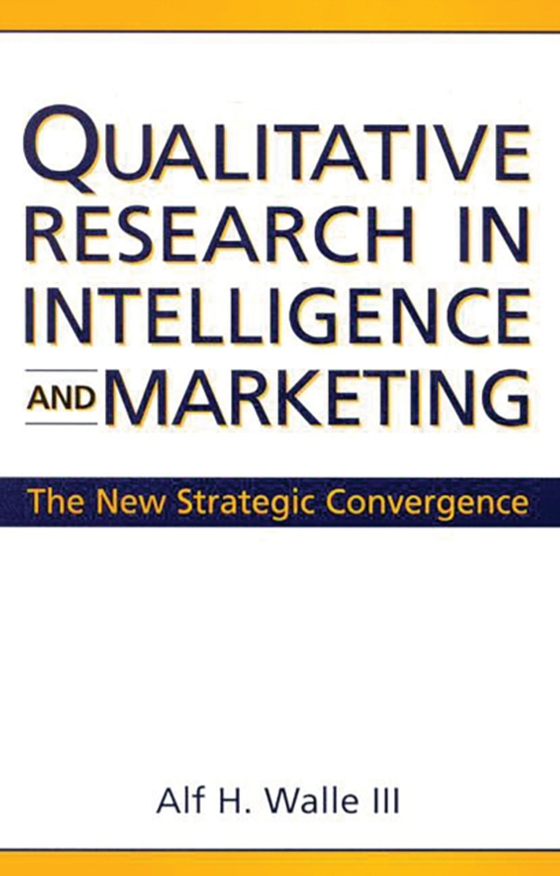
Qualitative Research in Intelligence and Marketing e-bog
546,47 DKK
(inkl. moms 683,09 DKK)
Although competitive intelligence and contemporary marketing research evolved from different intellectual traditions, both are indebted to qualitative methods of research and analysis. Walle shows that by merging their strategies in relevant ways, both fields grow even more robust and responsive to the needs of business clients and decision makers. Written by a noted humanist/social scientist w...
E-bog
546,47 DKK
Forlag
Praeger
Udgivet
30 oktober 2000
Længde
264 sider
Genrer
Business and Management
Sprog
English
Format
pdf
Beskyttelse
LCP
ISBN
9781567509649
Although competitive intelligence and contemporary marketing research evolved from different intellectual traditions, both are indebted to qualitative methods of research and analysis. Walle shows that by merging their strategies in relevant ways, both fields grow even more robust and responsive to the needs of business clients and decision makers. Written by a noted humanist/social scientist with a wide ranging background in competitive intelligence and marketing research, this book can be viewed as a breakthrough. It is the first book to juxtapose, compare, and integrate the qualitative methods of marketing research with those of competitive intelligence. Among its many important features is a discussion of how to conduct a qualitative audit that assesses the degree to which an organization is able to take full advantage of qualitative analytic techniques.Walle reminds us that the qualitative social sciences and humanities have a strong tradition within intelligence, one that dates back to World War II. Although innovations from the qualitative social sciences and humanities were developed 50 years ago, they were allowed to atrophy as the principle researchers of the time re-entered civilian life. Walle updates and revives them, and shows readers how to do it themselves for their own business purposes. The book reintroduces the World War II-era culture at a distance method that applied qualitative social sciences and humanities to intelligence, but updates them in terms of advances that have taken place since then. It also provides useful means to merge competitive intelligence and contemporary marketing research in ways that will result in collaboration and mutual understanding. Finally, Walle provides an appendix that discusses how to recruit and motivate researchers, whose training comes out of the humanities but whose contributions to business will prove of exceptional value. This is an important new resource for marketing practitioners and graduate level students and their teachers.
 Dansk
Dansk

